
Also see: Across Latin America, a Struggle for Communal Land and Indigenous Autonomy
Also see: Mexico: Electoral Reform Threatens the Self-Determination of Indigenous Peoples
The map of Latin America is in full flux. The reconfiguration of territories primarily affects the 670 indigenous communities that stretch from the Rio Grande to Patagonia, according to statistics from the Economic Commission of Latin America and the Caribbean. This political, social and economic remodeling of territory has been accompanied by seemingly endless conflict and social upheaval across the continent.
In 2000, the National Intelligence Council, a support center for the CIA, forecasted this scenario in a report titled “Global Tendencies 2015,” which states, “Indigenous resistance movements in Latin America will be one of the principal challenges for national governments in the next fifteen years.” They also affirmed that, “these movements will grow, facilitated by transnational networks of indigenous rights activists, supported by well-financed international human and ecological rights groups.”
In the decade since the publication of the report, indigenous resistance movements have indeed proliferated. What the report failed to explain, however, were the factors that would drive such growth.
The reordering of territory has blurred borders in both economic and political terms with projects such as the Mesoamerica Project – previously Plan Puebla-Panama – and the Initiative for Regional Infrastructure Integration of South America (IIRSA), which both entered into force after 2000. Their primary objectives include the construction of transportation and telecommunication networks, as well as energy-generation projects such as hydroelectric dams and wind farms. They also plan to designate national parks, protected areas, Heritage for Humanity sites, cross-border conservation areas, transnational parks (also called Parks for Peace), ecological and biological corridors and networks of protected areas.
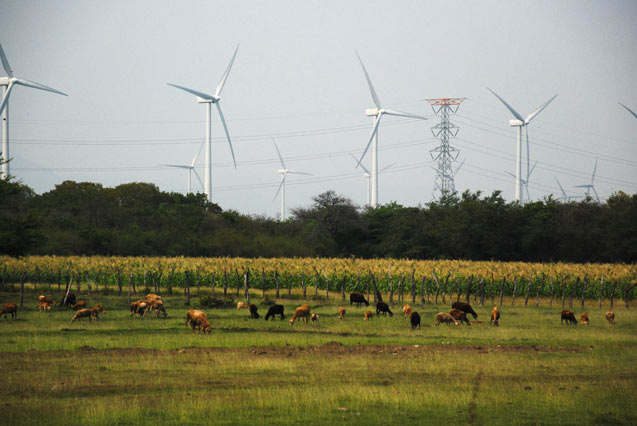 April 2014 – The wind farm owned by Gas Natural Fenosa, which uses the name Biìo Hioxo Energy, continues its progress on communal land where sacred ceremonial centers exist in Zaragoza Juchitán of Oaxaca. (Photo: Santiago Navarro F.)
April 2014 – The wind farm owned by Gas Natural Fenosa, which uses the name Biìo Hioxo Energy, continues its progress on communal land where sacred ceremonial centers exist in Zaragoza Juchitán of Oaxaca. (Photo: Santiago Navarro F.)
“When we think about IIRSA, we are talking about lines of communication, of channels that span 20,000 kilometers, or the entire Amazon, as a line that penetrates remote territories that have not yet been reached, where what has not yet been extracted can be accessed,” Ana Esther Ceceña, coordinator of the Latin American Observatory on Geopolitics, told Truthout. She considers the Mesoamerica Project and IIRSA as part of the same territorial restructuring strategy.
“Indigenous people are on the front lines of a battle, fighting a war that is on behalf of all of us, because it is there that the capitalist system looks to relaunch a new form of accumulation.”
The design of these projects is indeed strategic, and “progressive” governments are presenting them as a development opportunity. “What will happen with IIRSA is that local governments will be forced to be more disciplined because they will be brought in line with global markets. There are 500 transnational companies that produce half of global gross domestic product; when one looks at IIRSA’s design and these companies’ projects, they complement one another: The groundwork is being laid for the circulation of communication, merchandise, raw materials and energy,” Ceceña said.
Latin America is currently experiencing a brand of neocolonialism based on opening new possibilities for extraction. “Capital needs a reordering of territory – considering this as a type of historical-social construction – in order to continue reproducing itself, as much in terms of materials as in power relations, of accumulation of capital and profits. The ordering enables access on a large scale to certain types of material from the earth,” added Ceceña.
According to Gustavo Esteva, founder of the University of the Earth in Oaxaca, Mexico, the current capitalist system is in crisis, and this has led businesses to use pre-capitalist methods of extraction, in the colonial vein. “They are looking toward expansion into territories that these communities have preserved,” he said in an interview with Truthout.
This expansion has led to an affront to the ways of life that exist in these territories, which has provoked uprisings in many towns. “Indigenous people are on the front lines of a battle, fighting a war that is on behalf of all of us, because it is there that the capitalist system looks to relaunch a new form of accumulation,” Esteva said.
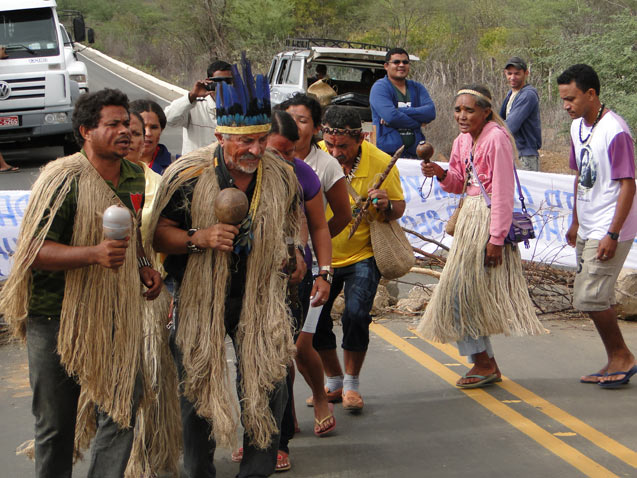 August 2013 – Indian Township Pipipan Floresta, Pernambuco Brazil. Closures to a federal road due to the forced demarcation of their lands. (Photo: Renata Bessi)
August 2013 – Indian Township Pipipan Floresta, Pernambuco Brazil. Closures to a federal road due to the forced demarcation of their lands. (Photo: Renata Bessi)
The response of indigenous communities across the Latin American continent has largely been twofold. The first is an institutional approach, using parameters established by international agreements like ILO-Convention 169 or local struggles for legal recognition of indigenous ways of life. The other is through declarations of autonomy from the jurisdiction or administration of the state and construction of systems of self-governance, such as the Zapatista movement in Mexico.
Territorial Demarcations Change the Maps
Indigenous people are working within this redefinition of territory in Latin America, precisely for the recognition of their lands. According to Joe Bryan, professor in the University of Colorado’s geography department, in the last two decades, countries across Latin America have transferred titles of various forms of land possession to indigenous and traditional community collectives to form a total of 2 million square kilometers, a space equivalent to the territory of Mexico.
“For over three decades, indigenous movements have undertaken the process of securing their territories, which is their claim in order to confront the permanent plundering that characterizes modern colonialism. These efforts are changing the map of Latin America through their public demonstrations and the recognition of their territorial rights,” Bryan told Truthout. “This transformation reinforces a series of legal changes regarding the recognition of indigenous rights, not just in response to instruments like ILO-Convention 169 and UN declarations, but also to a series of legal recognitions of collective rights.”
The relevance of the confluence of these facts cannot be negated, because it is due to indigenous movements that the very cartography of indigenous towns in resistance has changed. “The indigenous person was converted from a sort of folkloric curiosity to a political subject with his or her own discourse concerning rights,” Bryan said. “It was because of them, because of these movements that this mapping has occurred, not just for the production of their own maps, but also for the transformation of their social and political spaces in the region.”
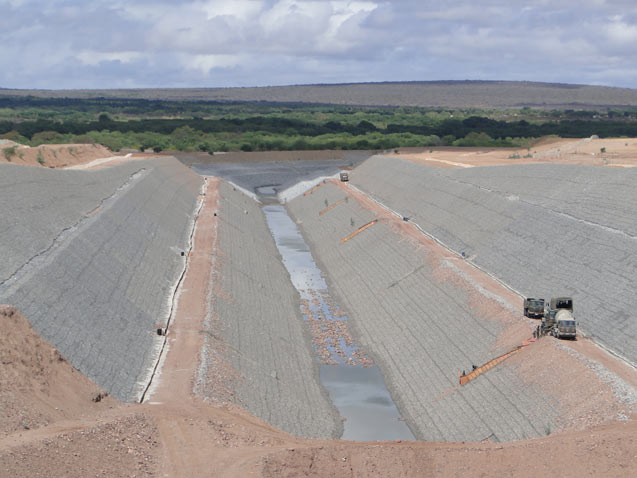 July 2013 – Part of a hydraulic infrastructure project in Brazil that starts in the town of Cabrobo and crosses the San Francisco river, directly affecting Truka and Pipipan indigenous peoples. (Photo: Renata Bessi)
July 2013 – Part of a hydraulic infrastructure project in Brazil that starts in the town of Cabrobo and crosses the San Francisco river, directly affecting Truka and Pipipan indigenous peoples. (Photo: Renata Bessi)
Demarcations Do Not Guarantee Rights
But these physical and legal changes do not necessarily mean that indigenous rights are being respected. For Bryan, the demarcation of indigenous lands does not guarantee the permanence of communities in their lands, nor does it protect these communities from the destruction of their communal resources through extractive activities.
These territorial adjustments have brought changes above all to resource management, political mapping and market formation, such as carbon markets. To confirm this, it is necessary to look closely at the political and economic context of the origin of these demarcations.
According to Bryan, the processes for such demarcations began in Colombia. “It did not begin as a progressive movement, but as a conservative process initiated by the state. It started due to the need to resolve violent conflicts, and ended with its recognition in the Colombian Constitution of 1990.”
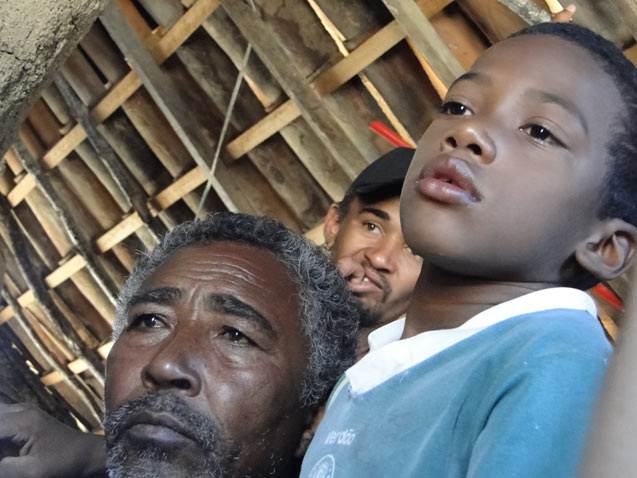 Indigenous Pankará in the town of Itacuruba, Pernambuco demand the demarcation of their lands, where a latent nuclear plant is located. (Photo: Renata Bessi)
Indigenous Pankará in the town of Itacuruba, Pernambuco demand the demarcation of their lands, where a latent nuclear plant is located. (Photo: Renata Bessi)
“For the market, it doesn’t matter if the property is private or owned collectively, like those of indigenous communities. What matters is having someone to do business with.”
Since then, indigenous territories were identified by the state as part of a geopolitical blueprint, which was of utmost importance in order to control the territory. Bryan said that the state allowed the participation of a wide range of indigenous movements, even armed movements, in a constituent assembly because the lack of state presence gave way for the space for a guerrilla presence, and the formation of self-defense forces and paramilitary groups.
He added that while reforms in Colombia were promoted to recognize and protect the territorial rights of indigenous populations, they also succeeded in guaranteeing the demobilization of armed indigenous groups and increasing the presence of the state in these same zones. Moreover, the titles given by the state did not slow the displacement of 5 million people since 1985 – the majority of them indigenous – due to guerilla and paramilitary violence.
Legal Recognition of Lands, New Markets
This model of reform served as an inspiration for Nicaragua, which also experienced a context of armed conflict over indigenous territories. The process had the support of the World Bank: “The Bank made efforts to facilitate the development of a property law for indigenous communities. They even sent a Nicaraguan commission to Colombia so that they could learn how to apply the law in their country. And with the backing of the Bank, the law was passed in 2002,” Bryan said.
Two years after the approval of the law, the World Bank supported another reform that was applied in Honduras, which recognized the collective property rights of indigenous and Afro-Honduran communities. In the same way, it supported reforms in Bolivia, which led to the recognition of communal territories of origin.
“Gas, mineral resources and lumber are exploited within titled territories without the possibility of refusal by communities.”
“The Bank had an interest in formalizing collective property rights through demarcation, title provision and registry, as a basic condition for the functioning of markets. The recognition of these collective rights is conditional upon the logic of neoliberal politics. Above all, it locates property as a necessary structure for the market,” Bryan explained. Given this, “for the market, it doesn’t matter if the property is private or owned collectively, like those of indigenous communities. What matters is having someone to do business with.”
Two examples can be referenced regarding the opening of markets in indigenous lands: carbon markets and the sale of ecosystem services. Bryan cites a study from the University of Arizona about carbon markets in the Lacandon jungle in Chiapas, Mexico that illustrates that the opening of new borders for markets in these territories is not as lucrative for the communities that live there as for the owners of capital. “Carbon markets would be impossible without indigenous territories. This doesn’t mean that they are profitable for these communities.”
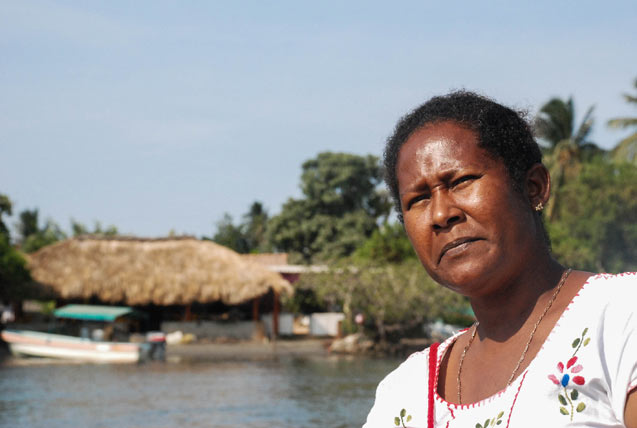 April 2011 – Chacahua, Oaxaca’s first natural protected area in Mexico, safeguards tropical ecosystems and determines certain land use restrictions to the natives of this community. (Photo: Santiago Navarro F.)
April 2011 – Chacahua, Oaxaca’s first natural protected area in Mexico, safeguards tropical ecosystems and determines certain land use restrictions to the natives of this community. (Photo: Santiago Navarro F.)
Extraction
Countries are thus recognizing indigenous territories, reforming their constitutions, and even recognizing, in some cases, a state made up of many nationalities, but at a cost. Bryan argues that these changes come along with a commitment to national development based on extraction.
Ecuador provides an example. According to Bryan, this country had the most significant and organized indigenous movement in the region throughout the 1990s. When Rafael Correa took office in 2007 he recognized their historical demands, issuing titles for large extensions of indigenous land in Ecuador’s lower Amazon regions. But shortly thereafter, he opened a bidding series for mineral extraction in the same zone, under the argument that the underground resources still belonged to the state. Bryan said that this type of discourse treats territory vertically and considers indigenous people as an obstacle to national progress.
Correa’s argument flew in the face of ILO-Convention 169, which maintains:
These towns [maintain the right to] participate in the utilization, administration, and conservation of said resources. In the case in which mineral or other underground resources belong to the State . . . governments should establish or maintain processes that seek to consult the affected towns, with the goal of determining whether or not the interests of these towns would be harmed, and to what degree, before undertaking or authorizing any type of prospecting or exploitation programs of the resources in their lands. The affected towns should participate only if it means that they will benefit from such activities, and receive fair compensation for whatever harm they undergo as a result of the activities.
Bolivia also shows similar tendencies, despite having the only indigenous president in the region, Evo Morales. “Gas, mineral resources and lumber are exploited within titled territories without the possibility of refusal by communities. It is like a type of currency. Once the title has been offered, communities are not given the right to say no to exploitation,” Bryan said.
Recognition Is Not Enough
The criteria for land demarcations are also the subject of criticism. Bryan explains that in the logic of this model, indigenous peoples are able to create and strengthen institutions to manage their land. However, he questions whether this can be achieved when the state, responding to the interests of capital, remains the dominant actor. Property demarcation ends up working, “like a straitjacket,” that limits the social relations that already exist in communities. It encourages isolation instead of the interaction that is necessary to establish territory – a clearly colonial move in Bryan’s estimation.
“Instead of revolutionizing the geography, it is only adjusted, reducing the demand for autonomy to the right to ownership.”
Another complaint regarding the regularization of indigenous territories relates to the fact that the state is the arbitrator, and therefore, indigenous matters are subject to legal standards for recognition. These maps conform to the state’s conception of property, fencing off indigenous territories and foreclosing on indigenous worldviews. “Instead of revolutionizing the geography, it is only adjusted, reducing the demand for autonomy to the right to ownership,” Brian said.
The problems with land demarcations indicate that instead of institutionalization, a reimagining of how to create spaces is necessary. Bryan calls for “an indigenous geopolitical reality” to create just, collective spaces.
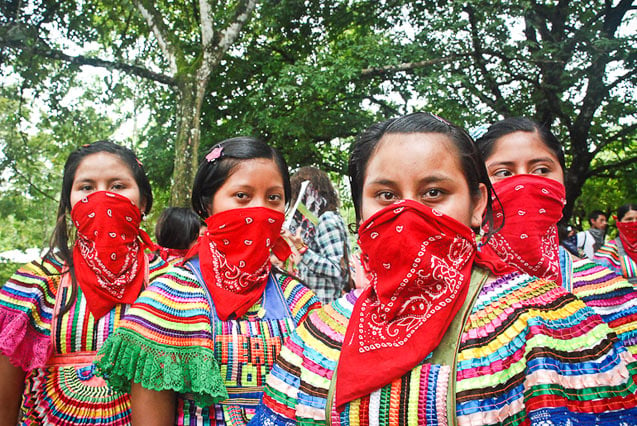 August 2013 – Guardians of the Good Government Council of the Chiapas town La Realidad, who were part of the first generation of the Escuelita convened by the women of the Zapatista Army of National Liberation (EZLN). (Photo: Santiago Navarro F.)
August 2013 – Guardians of the Good Government Council of the Chiapas town La Realidad, who were part of the first generation of the Escuelita convened by the women of the Zapatista Army of National Liberation (EZLN). (Photo: Santiago Navarro F.)
Other Paths
The fight for the future of the capitalist system is being waged in indigenous territories. It is in these same towns where alternatives to capitalism can be lived, as is being done through the indigenous movement of the Zapatista Liberation Army (EZLN), according to Gustavo Esteva. “What we have learned most importantly from Zapatista communities is that resistance does not mean just enduring, not just resisting the construction of a dam, a mine . . . resistance will only be successful if at the same time we construct another possibility for living,” he said. “We have to increase the visibility of these successful experiences that represent the alternative, because a lot of people are ready to act.”
Another example of communities resisting alienation are the indigenous towns of Bolivia which are not satisfied with the recognition of the rights of nations and the constitutional recognition of the rights of indigenous peoples.
In June, the collective Council for the Bolivian People presented a proposal to form autonomous governments, inspired by the Zapatista experience, which would lay out a plan that ceases to recognize the institutional electoral system. The Council’s proposal states they are, “divorcing themselves from federal, county, and municipal mandates, because the ‘good governing boards’ and the inherited, institutionalized forms of ‘bad government’ cannot exist together in the same territories.” Thus, according to the proposal, all territorial and geologic permits (mineral and hydrocarbon) are considered canceled.
Another form of self-governance in indigenous territories by indigenous people, which is very particular to Latin America, is the normative system known as “uses and customs” in the southern Mexican state of Oaxaca. These are forms of government which have been maintained in different historical contexts and which were recognized in 1995 by Oaxaca’s state Congress.
However, these normative systems have been at risk ever since the Program for the Certification of Ejido Rights and Titling of House Plots (PROCEDE), passed in 1994, modifying Article 27 of the Mexican Constitution governing the land tenure system. These regularization policies made the status of communal lands vulnerable and put communities on alert. Communities that did not want to take part in the reform, including many in Oaxaca, have entered into a new stage of resistance, a theme that we will explore in-depth in the next article.
Matching Opportunity Extended: Please support Truthout today!
Our end-of-year fundraiser is over, but our donation matching opportunity has been extended! All donations to Truthout will be matched dollar for dollar for a limited time.
Your one-time gift today will be matched immediately. Your monthly donation will be matched for the whole first year, doubling your impact.
This matching gift comes at a critical time. As Trump attempts to silence dissenting voices and oppositional nonprofits, reader support is our best defense against the right-wing agenda.
Help Truthout confront Trump’s fascism in 2026, and have your donation matched now!